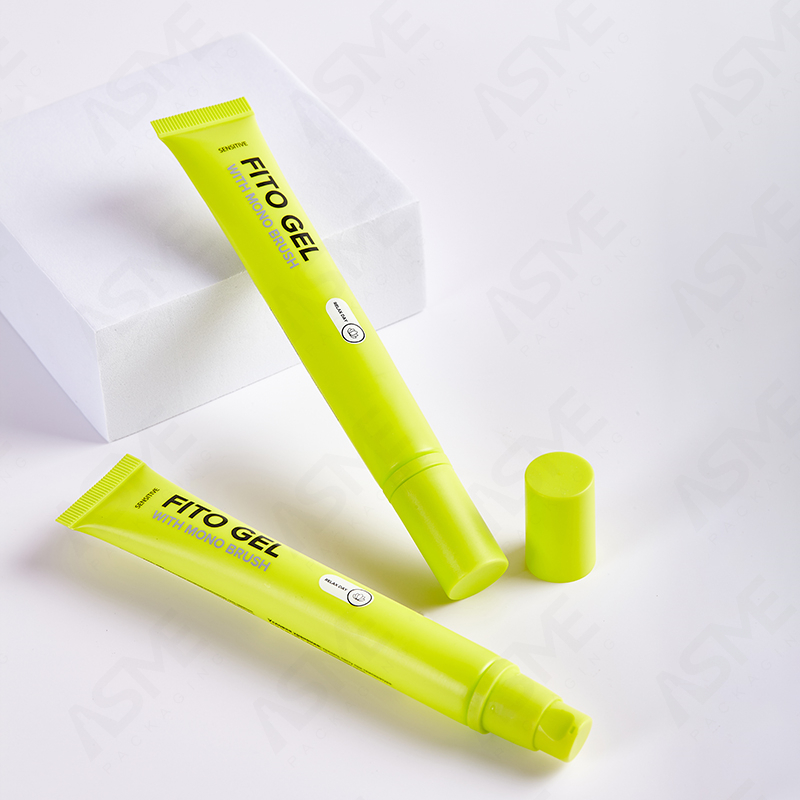Menu
Menu
Menu

As the demand for environmentally friendly packaging continues to grow, businesses are exploring innovative solutions to reduce their ecological footprint. One of the most critical aspects of sustainable packaging is the type of ink used for printing. At ASME Packaging Co., Ltd (ASME), we are committed to offering sustainable and high-quality printing solutions for tubes and other packaging needs. Among the most popular options are water-based and soy-based inks, each offering unique benefits and challenges.
In this article, we’ll explore the differences between water-based and soy-based inks, their applications in tube printing, and how ASME ensures that our products meet the highest sustainability standards. Additionally, we’ll touch on the broader impact of sustainable inks on the packaging industry and the environment.
The use of sustainable inks is a significant step toward reducing the environmental impact of packaging. Traditional petroleum-based inks often contain volatile organic compounds (VOCs), which can contribute to air pollution and pose health risks. In contrast, sustainable inks like water-based and soy-based options are designed to minimize these harmful effects.
At ASME, we recognize that the choice of ink can influence not only the environmental impact but also the recyclability and overall quality of the packaging. This is why we prioritize sustainable inks for our tube printing solutions. Let’s delve deeper into the two main types of sustainable inks and their respective advantages and disadvantages.
Water-based inks use water as the primary solvent, making them an eco-friendly alternative to solvent-based inks. These inks are free from harmful VOCs and are widely used in various industries, including packaging, textiles, and graphic printing. At ASME, we use water-based inks for a variety of tube printing applications due to their versatility and environmental benefits.
Despite these challenges, water-based inks remain a popular choice for eco-conscious brands. ASME continuously works to optimize the application of these inks in our tube printing processes to overcome these limitations.

Soy-based inks are derived from soybean oil, making them a renewable and biodegradable alternative to traditional inks. These inks are particularly popular in the printing of newspapers, magazines, and packaging. At ASME, we have integrated soy-based inks into our product offerings to provide clients with more sustainable options for tube printing.
At ASME, we work closely with our clients to determine whether soy-based inks are the right choice for their specific needs. Our goal is to balance sustainability with functionality and cost-effectiveness.
| Criteria | Water-Based Inks | Soy-Based Inks |
|---|---|---|
| Primary Ingredient | Water | Soybean Oil |
| Environmental Impact | Low VOC emissions | Biodegradable and renewable |
| Color Vibrancy | High | High |
| Drying Time | Longer | Longer |
| Cost | Moderate | Higher |
Both water-based and soy-based inks have their advantages and limitations. The choice often depends on the specific requirements of the project, such as material type, budget, and environmental goals. At ASME, we help our clients navigate these options to select the most appropriate solution for their tube printing needs.
The packaging industry is undergoing a significant transformation as brands and manufacturers prioritize sustainability. The adoption of sustainable inks is part of a broader trend toward eco-friendly practices, including the use of biodegradable materials, energy-efficient manufacturing processes, and closed-loop recycling systems. Companies like ASME are at the forefront of this movement, leveraging innovative technologies to meet the growing demand for sustainable packaging.
One emerging trend is the development of hybrid inks that combine the benefits of water-based and soy-based formulations. These inks aim to address the limitations of each type while maximizing their environmental and functional advantages. Additionally, advancements in drying technology are helping to reduce the production time for sustainable inks, making them more viable for large-scale applications.
At ASME Packaging Co., Ltd, sustainability is more than just a buzzword; it’s a core value that drives our operations. From sourcing eco-friendly materials to adopting energy-efficient manufacturing practices, we are dedicated to minimizing our environmental impact. Our use of water-based and soy-based inks is just one example of how we integrate sustainability into our products and services.
We believe that sustainable packaging is not only beneficial for the planet but also a smart business strategy. Consumers are increasingly choosing brands that align with their values, and sustainable packaging can serve as a powerful differentiator in a competitive market. By partnering with ASME, you can demonstrate your commitment to sustainability while delivering high-quality packaging solutions to your customers.
The choice between water-based and soy-based inks depends on various factors, including environmental goals, budget, and material compatibility. Both options offer significant advantages over traditional inks, making them excellent choices for eco-conscious brands. At ASME, we are proud to offer sustainable ink solutions that meet the highest standards of quality and environmental responsibility.
As the packaging industry continues to evolve, ASME remains committed to innovation and sustainability. Whether you’re looking for water-based or soy-based ink options for your tubes, we have the expertise and resources to deliver exceptional results. Contact us today to learn more about our sustainable printing solutions and how we can support your packaging needs.
Tags:cosmetic tube packaging,eco-friendly packaging,Sunscreen Tube Packaging